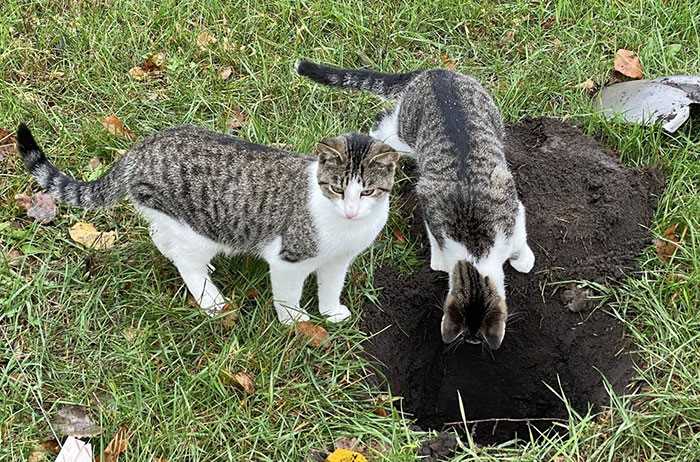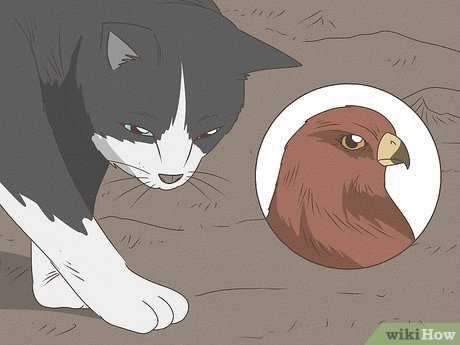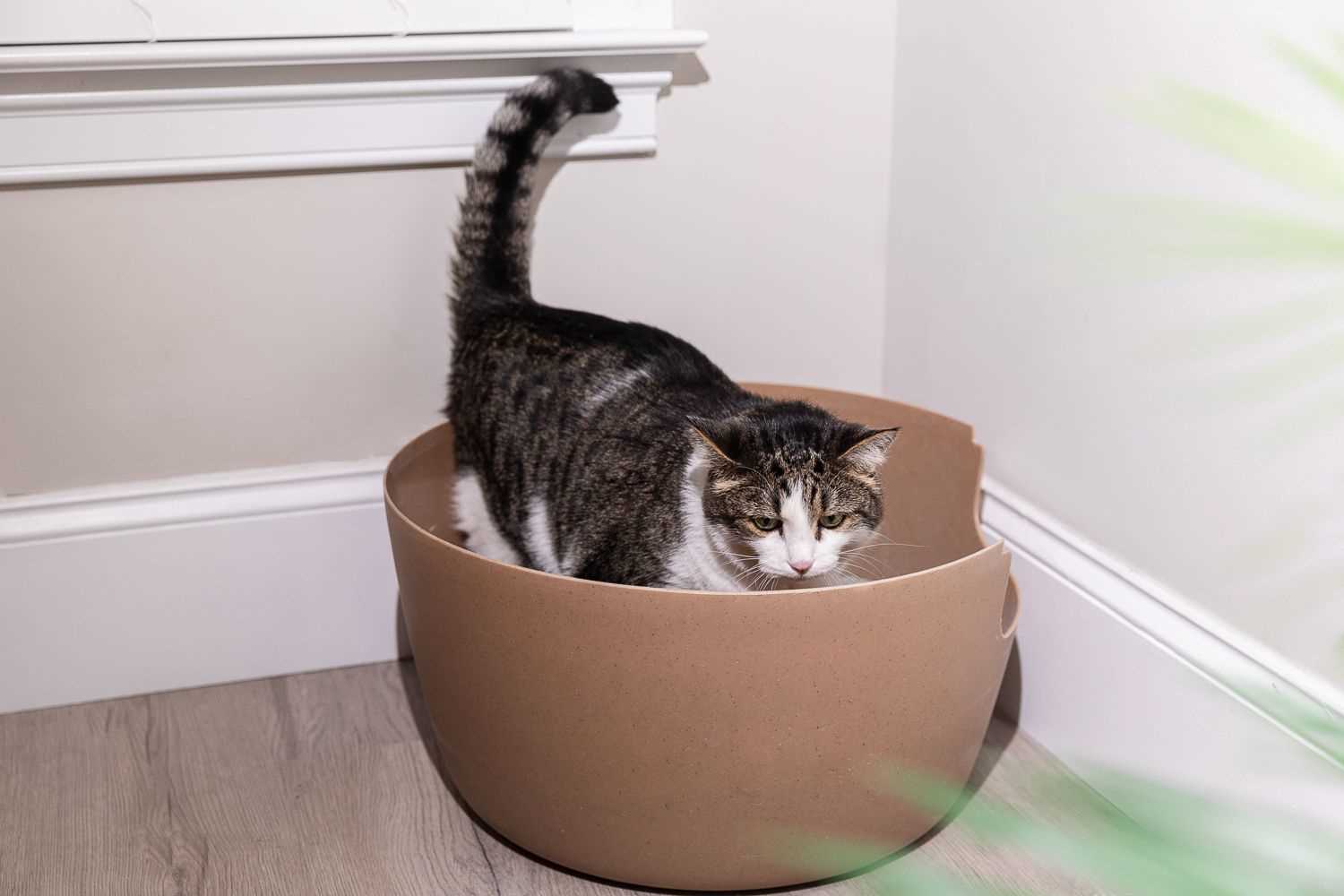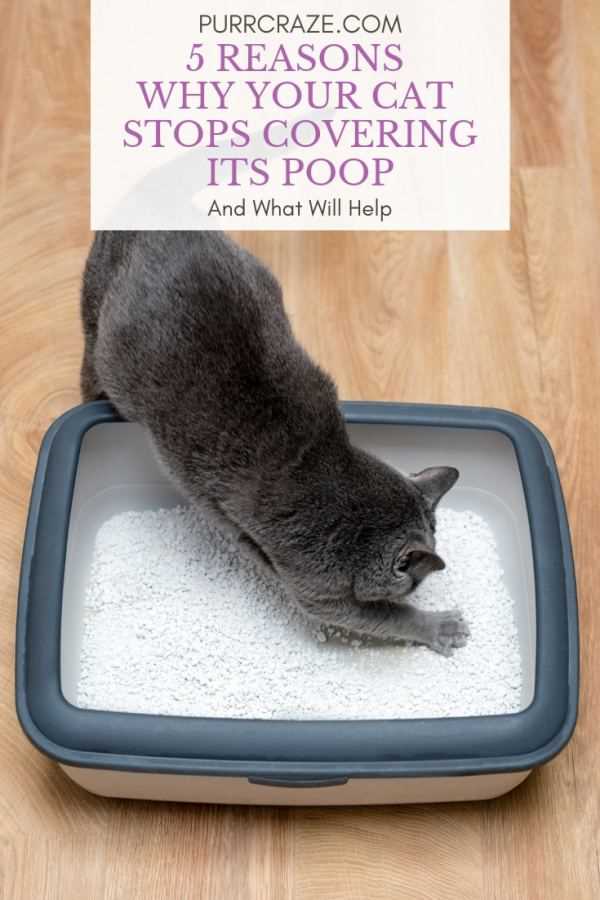

As an 8-year-old Scottish Fold, I take my hygiene seriously. When I finish my business, I instinctively feel the need to hide it. This behavior stems from my ancestors, who needed to avoid attracting predators. Even though I live in a safe home, those instincts remain strong.
Concealment serves another purpose: marking territory. By covering up, I send a message to other animals, indicating that this area is mine. It’s a subtle way of establishing dominance and ensuring my space stays secure.
For my human companions, it’s essential to maintain a clean litter box. Regular scooping helps keep the area fresh, which encourages me to continue my natural behavior without stress. So, remember to keep my space tidy for the best results!
Understanding the Instinctual Behavior of Feline Waste Management

It’s all about protecting my territory. When I bury my droppings, I’m sending a clear message to other animals that this space is mine. It’s a natural instinct, stemming from my ancestors who needed to hide their scent from predators.
The act of concealing what I’ve left behind serves as a strategy against potential threats. In the wild, being discreet can mean the difference between life and death. This behavior is not just about cleanliness; it’s a survival tactic that has been ingrained in me over generations.
Another reason for this behavior relates to social interactions. In a multi-pet household, I want to maintain harmony. By covering my waste, I minimize any territorial disputes with my companions, fostering a peaceful living environment.
Interestingly, I also find comfort in the act. The texture of the litter beneath my paws feels satisfying, and the process itself can be quite soothing. It’s a ritual that brings me a sense of security in my domain.
So, if you ever see me diligently digging and patting down the area, know that it’s not just a quirky habit–it’s deeply rooted in my instincts and essential for my well-being.
The Role of Territory Marking in Litter Box Habits
Territorial marking is a significant aspect of my daily routines. By concealing waste, I communicate to others that this area is mine. It’s a natural instinct that stems from my wild ancestors, who needed to protect their territory from rivals. Leaving droppings out in the open can attract unwanted attention from other animals, making it essential to keep things discreet.
Understanding the Purpose Behind Concealment

When I bury my business, I not only minimize scents but also signal my presence without being overt. This behavior helps maintain peace within my domain. Even in a home environment, marking territory remains crucial. I need to establish boundaries, ensuring that my space is respected by both humans and other pets.
The Influence of Environment on Behavior

Factors such as stress or the presence of new animals can impact my litter box habits. A change in my surroundings may lead to a more pronounced need to cover. Creating a calm and familiar space helps me feel secure, thus encouraging proper waste management. Providing adequate litter depth is also important; it allows me to effectively perform this instinctual act. If you’re curious about my diet, you might want to check if can cats eat banana chips.
How to Encourage Natural Digging and Covering Behaviors in Home Felines
Provide an appropriate litter type that mimics sand or soil. Felines instinctively prefer textures that feel natural under their paws, so opt for clumping or unscented materials that allow for easy digging and concealment.
Ensure the litter box is spacious and placed in a quiet, private area. A box that feels secure and accessible will encourage my kind to engage in burying behavior without feeling threatened.
Incorporate Digging Opportunities
Introduce a designated digging area filled with safe, soft substrate like shredded paper or organic soil. This can be a small box or a section of the room. Encourage exploration by hiding treats or toys within the substrate, motivating me to dig and engage in natural instincts.
Regular Cleaning and Maintenance
Keep the litter box clean and regularly refreshed. A tidy environment promotes a willingness to use the box, as I prefer not to interact with waste. Remove clumps daily and change the litter completely weekly to maintain a pleasant atmosphere.
Consider using multiple boxes in different locations if there are several of us in the household. This reduces competition and gives each of us personal space to perform our natural behaviors comfortably.
By implementing these strategies, my human can help me feel more in tune with my instincts, making waste management a more natural and satisfying experience. Remember, a happy environment fosters a happy feline!
The Impact of Litter Type on Cats’ Covering Behavior

Choosing the right substrate can significantly influence how I manage my waste. Various materials provide different textures and scents, which can affect my inclination to dig and conceal. Here are some observations on different types of litter:
- Clumping Clay Litter: This type forms solid clumps upon contact with moisture, making it easier for me to bury my droppings. I appreciate the texture, which feels natural under my paws.
- Crystal Litter: While it absorbs moisture well, it lacks the ability to clump. I find myself less inclined to dig since the texture is not as satisfying, which can lead to less covering.
- Biodegradable Litter: Made from materials like corn or recycled paper, this option can be appealing. The scents are often milder, but the texture varies. Some feel great for digging, while others do not.
The scent of the litter is another important factor. Strong fragrances might deter me from digging, as I prefer a more neutral smell. A balanced, unscented option often encourages more frequent covering.
Additionally, the depth of the litter matters. A deeper layer allows for better digging, while a shallow layer can feel restrictive. Ideally, I prefer at least 2-3 inches to feel comfortable.
Experimenting with different types can help identify what I enjoy most. My preferences might change over time, so regular reassessment is key to maintaining good habits in my waste management.
Video:
As an 8-year-old Scottish Fold, I take my hygiene seriously. When I finish my business, I instinctively feel the need to hide it. This behavior stems from my ancestors, who needed to avoid attracting predators. Even though I live in a safe home, those instincts remain strong.
Concealment serves another purpose: marking territory. By covering up, I send a message to other animals, indicating that this area is mine. It’s a subtle way of establishing dominance and ensuring my space stays secure.
For my human companions, it’s essential to maintain a clean litter box. Regular scooping helps keep the area fresh, which encourages me to continue my natural behavior without stress. So, remember to keep my space tidy for the best results!
Understanding the Instinctual Behavior of Feline Waste Management

It’s all about protecting my territory. When I bury my droppings, I’m sending a clear message to other animals that this space is mine. It’s a natural instinct, stemming from my ancestors who needed to hide their scent from predators.
The act of concealing what I’ve left behind serves as a strategy against potential threats. In the wild, being discreet can mean the difference between life and death. This behavior is not just about cleanliness; it’s a survival tactic that has been ingrained in me over generations.
Another reason for this behavior relates to social interactions. In a multi-pet household, I want to maintain harmony. By covering my waste, I minimize any territorial disputes with my companions, fostering a peaceful living environment.
Interestingly, I also find comfort in the act. The texture of the litter beneath my paws feels satisfying, and the process itself can be quite soothing. It’s a ritual that brings me a sense of security in my domain.
So, if you ever see me diligently digging and patting down the area, know that it’s not just a quirky habit–it’s deeply rooted in my instincts and essential for my well-being.
The Role of Territory Marking in Litter Box Habits
Territorial marking is a significant aspect of my daily routines. By concealing waste, I communicate to others that this area is mine. It’s a natural instinct that stems from my wild ancestors, who needed to protect their territory from rivals. Leaving droppings out in the open can attract unwanted attention from other animals, making it essential to keep things discreet.
Understanding the Purpose Behind Concealment

When I bury my business, I not only minimize scents but also signal my presence without being overt. This behavior helps maintain peace within my domain. Even in a home environment, marking territory remains crucial. I need to establish boundaries, ensuring that my space is respected by both humans and other pets.
The Influence of Environment on Behavior

Factors such as stress or the presence of new animals can impact my litter box habits. A change in my surroundings may lead to a more pronounced need to cover. Creating a calm and familiar space helps me feel secure, thus encouraging proper waste management. Providing adequate litter depth is also important; it allows me to effectively perform this instinctual act. If you’re curious about my diet, you might want to check if can cats eat banana chips.
How to Encourage Natural Digging and Covering Behaviors in Home Felines
Provide an appropriate litter type that mimics sand or soil. Felines instinctively prefer textures that feel natural under their paws, so opt for clumping or unscented materials that allow for easy digging and concealment.
Ensure the litter box is spacious and placed in a quiet, private area. A box that feels secure and accessible will encourage my kind to engage in burying behavior without feeling threatened.
Incorporate Digging Opportunities
Introduce a designated digging area filled with safe, soft substrate like shredded paper or organic soil. This can be a small box or a section of the room. Encourage exploration by hiding treats or toys within the substrate, motivating me to dig and engage in natural instincts.
Regular Cleaning and Maintenance
Keep the litter box clean and regularly refreshed. A tidy environment promotes a willingness to use the box, as I prefer not to interact with waste. Remove clumps daily and change the litter completely weekly to maintain a pleasant atmosphere.
Consider using multiple boxes in different locations if there are several of us in the household. This reduces competition and gives each of us personal space to perform our natural behaviors comfortably.
By implementing these strategies, my human can help me feel more in tune with my instincts, making waste management a more natural and satisfying experience. Remember, a happy environment fosters a happy feline!
The Impact of Litter Type on Cats’ Covering Behavior

Choosing the right substrate can significantly influence how I manage my waste. Various materials provide different textures and scents, which can affect my inclination to dig and conceal. Here are some observations on different types of litter:
- Clumping Clay Litter: This type forms solid clumps upon contact with moisture, making it easier for me to bury my droppings. I appreciate the texture, which feels natural under my paws.
- Crystal Litter: While it absorbs moisture well, it lacks the ability to clump. I find myself less inclined to dig since the texture is not as satisfying, which can lead to less covering.
- Biodegradable Litter: Made from materials like corn or recycled paper, this option can be appealing. The scents are often milder, but the texture varies. Some feel great for digging, while others do not.
The scent of the litter is another important factor. Strong fragrances might deter me from digging, as I prefer a more neutral smell. A balanced, unscented option often encourages more frequent covering.
Additionally, the depth of the litter matters. A deeper layer allows for better digging, while a shallow layer can feel restrictive. Ideally, I prefer at least 2-3 inches to feel comfortable.
Experimenting with different types can help identify what I enjoy most. My preferences might change over time, so regular reassessment is key to maintaining good habits in my waste management.
Video:
As an 8-year-old Scottish Fold, I take my hygiene seriously. When I finish my business, I instinctively feel the need to hide it. This behavior stems from my ancestors, who needed to avoid attracting predators. Even though I live in a safe home, those instincts remain strong.
Concealment serves another purpose: marking territory. By covering up, I send a message to other animals, indicating that this area is mine. It’s a subtle way of establishing dominance and ensuring my space stays secure.
For my human companions, it’s essential to maintain a clean litter box. Regular scooping helps keep the area fresh, which encourages me to continue my natural behavior without stress. So, remember to keep my space tidy for the best results!
Understanding the Instinctual Behavior of Feline Waste Management

It’s all about protecting my territory. When I bury my droppings, I’m sending a clear message to other animals that this space is mine. It’s a natural instinct, stemming from my ancestors who needed to hide their scent from predators.
The act of concealing what I’ve left behind serves as a strategy against potential threats. In the wild, being discreet can mean the difference between life and death. This behavior is not just about cleanliness; it’s a survival tactic that has been ingrained in me over generations.
Another reason for this behavior relates to social interactions. In a multi-pet household, I want to maintain harmony. By covering my waste, I minimize any territorial disputes with my companions, fostering a peaceful living environment.
Interestingly, I also find comfort in the act. The texture of the litter beneath my paws feels satisfying, and the process itself can be quite soothing. It’s a ritual that brings me a sense of security in my domain.
So, if you ever see me diligently digging and patting down the area, know that it’s not just a quirky habit–it’s deeply rooted in my instincts and essential for my well-being.
The Role of Territory Marking in Litter Box Habits
Territorial marking is a significant aspect of my daily routines. By concealing waste, I communicate to others that this area is mine. It’s a natural instinct that stems from my wild ancestors, who needed to protect their territory from rivals. Leaving droppings out in the open can attract unwanted attention from other animals, making it essential to keep things discreet.
Understanding the Purpose Behind Concealment

When I bury my business, I not only minimize scents but also signal my presence without being overt. This behavior helps maintain peace within my domain. Even in a home environment, marking territory remains crucial. I need to establish boundaries, ensuring that my space is respected by both humans and other pets.
The Influence of Environment on Behavior

Factors such as stress or the presence of new animals can impact my litter box habits. A change in my surroundings may lead to a more pronounced need to cover. Creating a calm and familiar space helps me feel secure, thus encouraging proper waste management. Providing adequate litter depth is also important; it allows me to effectively perform this instinctual act. If you’re curious about my diet, you might want to check if can cats eat banana chips.
How to Encourage Natural Digging and Covering Behaviors in Home Felines
Provide an appropriate litter type that mimics sand or soil. Felines instinctively prefer textures that feel natural under their paws, so opt for clumping or unscented materials that allow for easy digging and concealment.
Ensure the litter box is spacious and placed in a quiet, private area. A box that feels secure and accessible will encourage my kind to engage in burying behavior without feeling threatened.
Incorporate Digging Opportunities
Introduce a designated digging area filled with safe, soft substrate like shredded paper or organic soil. This can be a small box or a section of the room. Encourage exploration by hiding treats or toys within the substrate, motivating me to dig and engage in natural instincts.
Regular Cleaning and Maintenance
Keep the litter box clean and regularly refreshed. A tidy environment promotes a willingness to use the box, as I prefer not to interact with waste. Remove clumps daily and change the litter completely weekly to maintain a pleasant atmosphere.
Consider using multiple boxes in different locations if there are several of us in the household. This reduces competition and gives each of us personal space to perform our natural behaviors comfortably.
By implementing these strategies, my human can help me feel more in tune with my instincts, making waste management a more natural and satisfying experience. Remember, a happy environment fosters a happy feline!
The Impact of Litter Type on Cats’ Covering Behavior

Choosing the right substrate can significantly influence how I manage my waste. Various materials provide different textures and scents, which can affect my inclination to dig and conceal. Here are some observations on different types of litter:
- Clumping Clay Litter: This type forms solid clumps upon contact with moisture, making it easier for me to bury my droppings. I appreciate the texture, which feels natural under my paws.
- Crystal Litter: While it absorbs moisture well, it lacks the ability to clump. I find myself less inclined to dig since the texture is not as satisfying, which can lead to less covering.
- Biodegradable Litter: Made from materials like corn or recycled paper, this option can be appealing. The scents are often milder, but the texture varies. Some feel great for digging, while others do not.
The scent of the litter is another important factor. Strong fragrances might deter me from digging, as I prefer a more neutral smell. A balanced, unscented option often encourages more frequent covering.
Additionally, the depth of the litter matters. A deeper layer allows for better digging, while a shallow layer can feel restrictive. Ideally, I prefer at least 2-3 inches to feel comfortable.
Experimenting with different types can help identify what I enjoy most. My preferences might change over time, so regular reassessment is key to maintaining good habits in my waste management.









